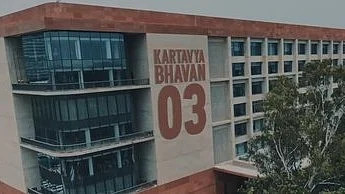The Union Cabinet chaired by the Prime Minister Narendra Modi approved the National Education Policy 2020 on Wednesday, making way for large scale, transformational reforms in both school and higher education sectors.
This new policy replaces the 34-year-old National Policy on Education (NPE), 1986 and is aligned to the 2030 Agenda for Sustainable Development and aims to transform India into a vibrant knowledge society and global knowledge superpower by making both school and college education more holistic, flexible, multidisciplinary, suited to 21st century needs and aimed at bringing out the unique capabilities of each student.
Taking to Twitter, the prime minister said, “I wholeheartedly welcome the approval of the National Education Policy 2020! This was a long due and much awaited reform in the education sector, which will transform millions of lives in the times to come! In this era of knowledge, where learning, research and innovation are important, the NEP will transform India into a vibrant knowledge hub.”
One of the features of the new education policy is to replace the 10+2 structure with a 5+3+3+4 curricular structure will benefit the younger children.
What the policy will focus on
According to the Narendra Modi website, the policy will focus on the following.
- School Education
a) Ensuring universal access
b) Early childhood care and education with new curricular and pedagogal structure
c) Attaining foundational literacy and numeracy
d) Reforming in curricula and pedagogy
e) Multilingualism and the power of language
f) Assessment reforms
g) Equitable and inclusive education
h) Robust teacher recruitment and career path
i) School governance
j) Standard-setting and accreditation for school education
In addition, the programme will also have a special focus on higher education and proper teacher training.
Interestingly, the matter of multilingualism has become a topic of discussion. According to the website, “The policy has emphasised mother tongue/local language/regional language as the medium of instruction at least till Grade 5, but preferably till Grade 8 and beyond. Sanskrit to be offered at all levels of school and higher education as an option for students, including in the three-language formula. Other classical languages and literatures of India also to be available as options. No language will be imposed on any student. Students to participate in a fun project/activity on ‘The Languages of India’, sometime in Grades 6-8, such as, under the ‘Ek Bharat Shrestha Bharat’ initiative. Several foreign languages will also be offered at the secondary level. Indian Sign Language (ISL) will be standardized across the country, and National and State curriculum materials developed, for use by students with hearing impairment,” the website said.
Read the full text here.
While it's premature to determine the success of the policy, one thing is certain. It's about time India tried something new when it comes to educating its future citizens.









